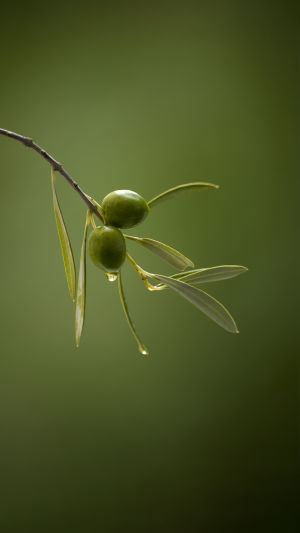The olive tree is an ancient fruit tree that dates back thousands of years. It is not only an important cash crop in the Mediterranean region but also widely cultivated around the world.
Renowned for its resilience and longevity, some olive trees have been known to live for hundreds of years. The unique flavor and rich nutritional value of olives make them an indispensable part of the modern diet.
<h3>Olive Cultivation</h3>
Olive trees are remarkably adaptable, thriving in a variety of soil types, although they grow best in well-drained, sandy soil. They are highly resilient to climate conditions, tolerating high temperatures and drought, though they are susceptible to frost in colder climates. For optimal growth, olive trees should be planted in sunny locations to ensure sufficient photosynthesis.
The cultivation process of olive trees includes stages such as seedling growth, transplanting, and establishment. During the nursery stage, olive saplings are typically grown in greenhouses or seedbeds until they reach a suitable height for transplantation to the field.
Maintaining proper row and plant spacing during transplanting is crucial to ensure each tree has adequate space to grow. Essential maintenance of olive trees includes irrigation, pruning, and pest control.
Although olive trees are drought-tolerant, they still require moderate irrigation during dry seasons to sustain normal growth and fruit production.
<h3>Nutritional Value of Olives</h3>
Olive fruits are rich in a variety of nutrients, including monounsaturated fatty acids, vitamin E, iron, calcium, and dietary fiber.
Monounsaturated fatty acids are particularly beneficial for cardiovascular health, helping to lower levels of "bad" cholesterol (low-density lipoprotein) while increasing "good" cholesterol (high-density lipoprotein). Vitamin E, a powerful antioxidant, protects cells from free radical damage and slows the aging process.
Olive oil, one of the most significant products derived from olives, is celebrated for its nutritional value and health benefits. It is abundant in polyphenolic compounds, which possess anti-inflammatory, antibacterial, and antioxidant properties.
Studies indicate that regular consumption of olive oil can reduce the risk of heart disease and certain cancers. Additionally, olive oil has skincare and beauty benefits and is commonly used in skincare products and cosmetics.
<h3>The Many Uses of Olives</h3>
Beyond being a vital food and oil crop, olive trees have numerous other uses. The wood of the olive tree is hard and durable, often utilized in the manufacture of furniture and crafts. Olive leaves and olive pomace also hold economic value, serving as sources for natural pigments and feed additives.
Olive trees contribute significantly to environmental protection. Their well-developed root systems help prevent soil erosion and protect soil structure. Additionally, olive trees absorb carbon dioxide, aiding in the mitigation of climate change.
<h3>Cultural and Economic Significance</h3>
As an ancient and essential economic crop, olive trees are cherished for their unique flavor and rich nutritional value. With increasing awareness of healthy eating, the global demand for olives and their products continues to rise.
The cultural significance of olive trees is profound, particularly in the Mediterranean region, where they have been a symbol of peace, wisdom, and prosperity for millennia.
The olive tree is a remarkable and ancient fruit tree that has played a vital role in human history and continues to do so. Its adaptability, nutritional value, and numerous uses make it an invaluable crop.
As global demand for healthy and nutritious food increases, the significance of olive trees and their products will only grow. By embracing sustainable practices and innovative technologies, the olive industry can continue to thrive, contributing to economic development, environmental conservation, and cultural heritage.





